Tags
"salmon"
Siegel Salmon Restoration Internship 2015: Garrett Linck, Part 3
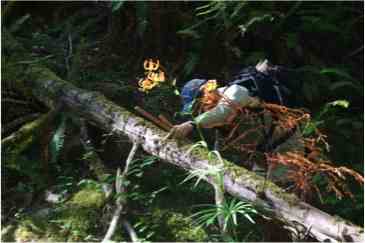
Doug navigates his way under a downed tree while collecting salmon habitat data. Using CHaMP (Columbia Habitat Monitoring Protocol), we measured the length, width at 1/3rd, width at 2/3rds, and maximum depth, while distinguishing each stretch of the stream as either a riffle, scour pool, or non-turb.
Garret Linck is working on habitat conservation and restoration in the California wilderness as the Paul Siegel Salmon Restoration intern. For his final blog installation, he is sharing a series of photos from his experience.
Fort Bragg annually hosts “The World’s Largest Salmon Barbecue” as an effort to raise funds and awareness for Salmon Habitat Restoration in the area. While CHaMP was developed in the Pacific Northwest, conservation organizations have been actively working to extend efforts to Northern California to collect data and restore ideal stream conditions, especially in the aftermath of recent droughts. More information here: http://www.salmonrestoration.com/world_largest_b_3.html.
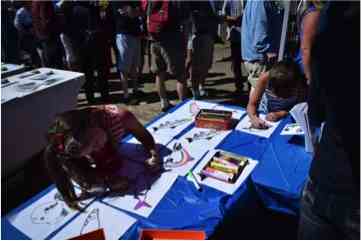
Continue reading Siegel Salmon Restoration Internship 2015: Garrett Linck, Part 3
Siegel Salmon Restoration Internship 2015: Garrett Linck, Part 2
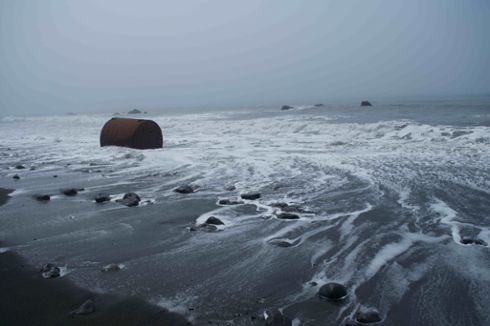
Garret Linck is working on habitat conservation and restoration in the California wilderness as the Paul Siegel Salmon Restoration intern.
It’s hard to believe that I only have two and a half weeks left working for the Mendocino Land Trust. I’m nearly finished with one of the largest projects I’ve been working on this summer: a management plan for the Noyo River Redwoods Property. In my last post I mentioned the salmonid habitat surveys I was conducting in the Noyo River with Doug. This property lies along that same river, but further inland in eastern Mendocino county—near the city of Willits. The 426-acre property was purchased for $7.5 million in 2011 by Save the Redwoods League (a non-profit organization that protects and restores coastal Redwood forests), before being sold to the Mendocino Land Trust in 2012.
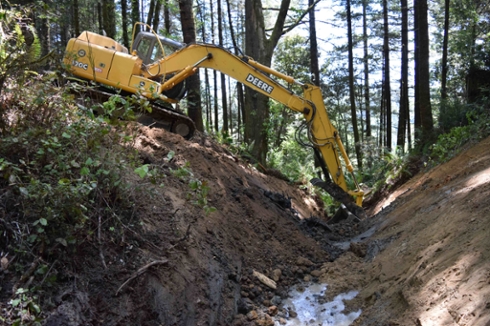
Continue reading Siegel Salmon Restoration Internship 2015: Garrett Linck, Part 2
The Siegel Salmon Restoration Internship: Part 3
Some things about the American beaver:
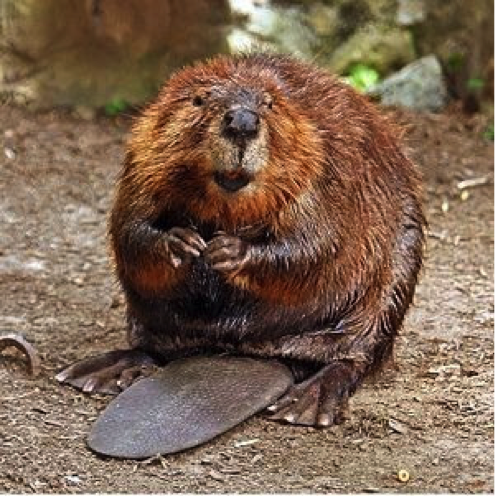 Figure 1. The American beaver.
Figure 1. The American beaver.
When Doug, the Land Trust’s Big River Program Manager, first proposed the idea to me, I was more than a little surprised. We had spent so many weeks talking about large woody debris, culvert passage, and road decommissioning that it seemed almost impossible for something so cute and furry to help salmon. I suspended my disbelief and delved into research. Lo and behold, beaver reintroduction projects have proven successful throughout the Pacific Northwest, improving salmon habitat and raising fish numbers. It isn’t an easy choice by any means; reintroducing beavers on one property requires monitoring their survival, distribution shifts, and population growth. However, a surprisingly large body of literature exists on the remediation of these issues, and has been used in other beaver reintroduction projects. So, why not try it?
Continue reading The Siegel Salmon Restoration Internship: Part 3
The Siegel Salmon Restoration Internship: Part 2
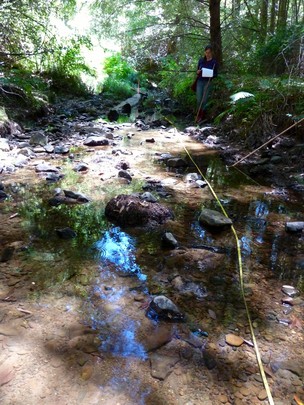
Figure 1. In-stream measurements at Russell Brook. Although picturesque, the stream is not very hospitable for rearing and migrating salmon.
The large woody debris project forges ahead here at the Mendocino Land Trust. Two weeks ago, I went into the stream at Russell Brook along with Doug (Big River Program manager) and Nicolet (Trails & Stewardship Coordinator). We walked the length of the project area (about a half mile) and took some basic stream measurements (Figure 1) that quantitatively describe the area and determine the baseline level of viable salmon habitat. Spoiler alert: it’s pretty low. Pools are infrequent and shallow, meaning that salmon don’t have good rearing habitat, and cannot rest during upstream migration. Water temperature is high, which poses a problem for these cold-water inhabitants. However, only a couple hundred feet up the stream, where large woody debris has already been installed, deep pools swell over the tops of waders (a bittersweet discovery).
The California Conservation Corps (CCC) has now begun the arduous process of hauling and anchoring huge logs in the stream according to detailed plans (Figure 2). I’ll get to see the crews in action in a couple weeks while conducting an inventory of the large woody debris that is in place.
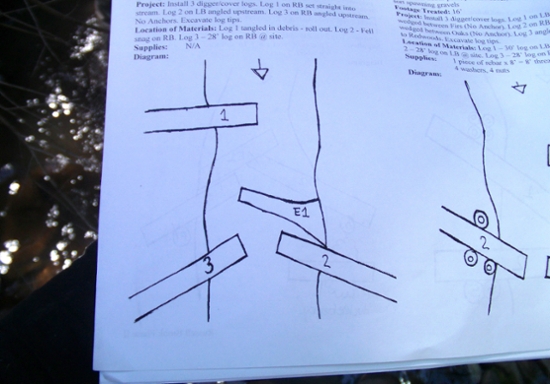 Figure 2: Large woody debris plans developed by the California Conservation Corps.
Figure 2: Large woody debris plans developed by the California Conservation Corps.
Continue reading The Siegel Salmon Restoration Internship: Part 2
Beauty is a little girl with seaweed on her lips, life is a treasure on the beach
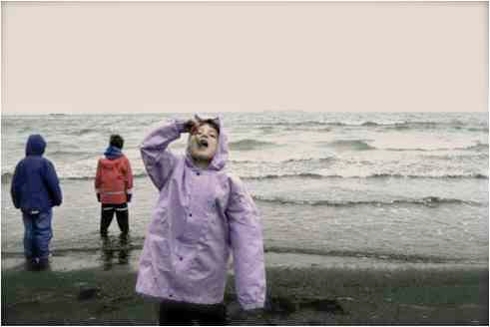
“Do you like it?” I asked, as little Elaine eagerly took the sea lettuce from my outstretched hand and popped it in her mouth. She chewed thoughtfully, opening her mouth so I could see her teeth every time she bit down, fully exploring the odd new texture. Then she swallowed and a serene expression came over her sea-sprayed face: “Miss Leila,” she said, as salt water dripped from her eyelashes, “I just want to stay on this beach forever and eat seaweed.” Elaine hugged herself within her purple rain jacket and turned to look out at the wind-whipped ocean. It was a picture of wildness and beauty, and it made me feel really alive—kind of like the feeling you get in the moment you decide to embrace the rain and just get soaked. I couldn’t have wiped the grin off my face if I wanted to as I turned to look at the other children playing along the beach and picked up a new handful of sea lettuce. I swirled it in the surf to rinse it of sand and walked down towards the little rain-dancing rain-boots with my handful of salt-soaked offerings.
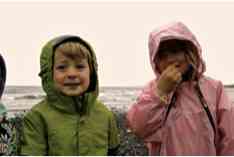
Officially my job title at the Kodiak National Wildlife Refuge is “Park Ranger,” which is both a really poor sum-up of my actual position and kind of a misnomer anyways when you work for the Fish and Wildlife Service, with is quite different from state or National Parks. When I describe my job to other people I tell them I am the Youth Conservation Corps crew leader at the Kodiak National Wildlife Refuge (KNWR), and that I lead a team of four high school students in projects both in town and out in the field that benefit the Refuge and the Kodiak community and educate the high schoolers about the National Wildlife Refuge system and the many things that KNWR does to fulfill its mission to conserve and protect the Kodiak Brown Bears and their beautiful archipelago habitat. Which is all grand and well, but when I really think about what this summer experience is meaning to me, three words come to mind with which I would describe myself: teacher, learner, explorer.
Greetings from the Northern California Wilderness: The Siegel Salmon Restoration Internship
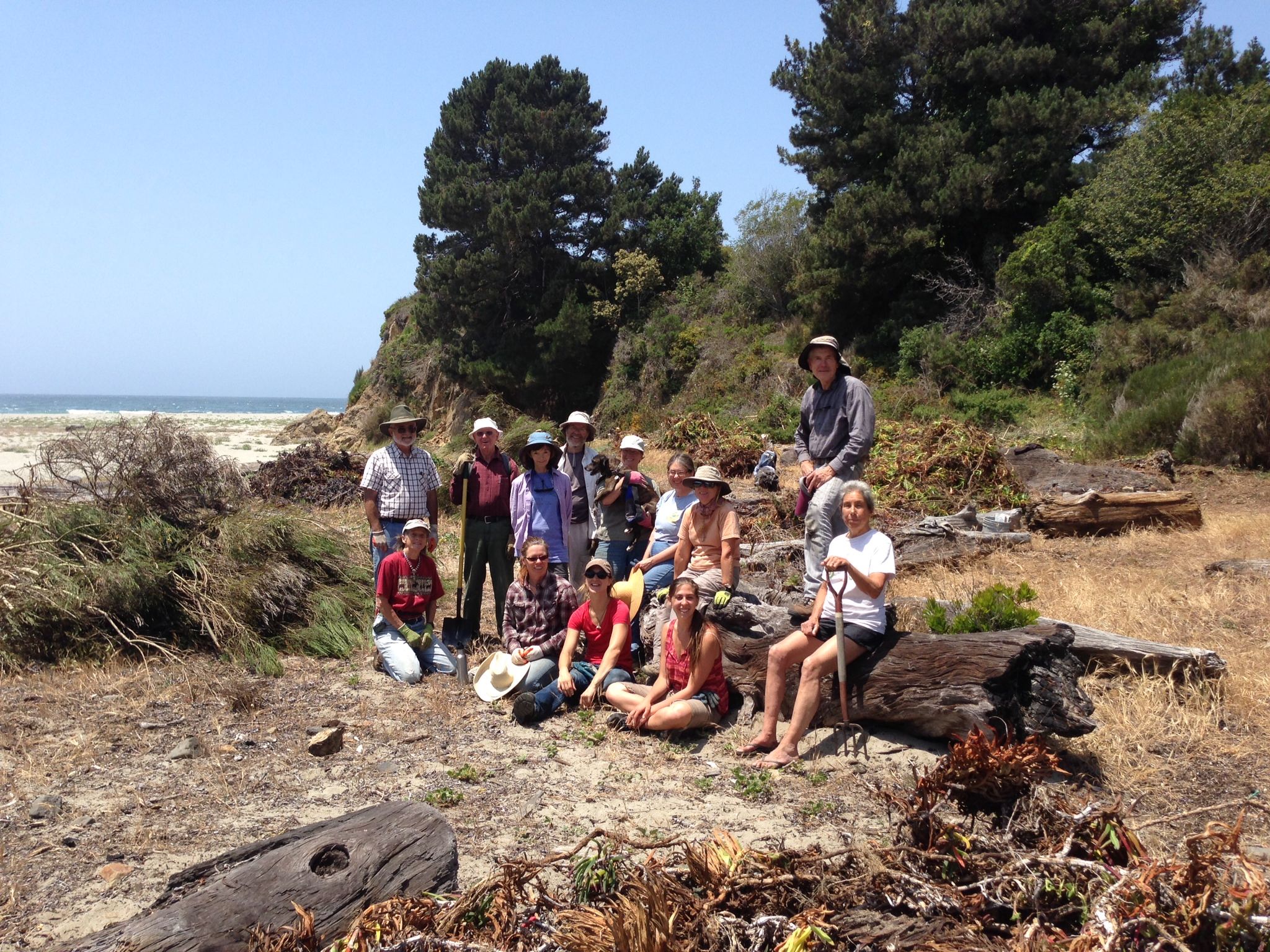
Hello from the Northern California wilderness! This past week and a half has gone by so quickly. The first thing that struck me was the natural beauty of this area. Every morning I get to run on the trails behind my cabin in Russian Gulch State Park, then I visit the beaches each afternoon. I can hear sea lions from my campfire spot, and see great blue herons on my way to work.
I spent most of last week settling into the office and meeting all the wonderful people who work here. I also got to tag along for a few bird surveys, which the Mendocino Land Trust is conducting with the help of some volunteers. I did manage to pick up a couple calls, and at the least can now distinguish between the chips of a squirrel versus those of a bird (harder than you may imagine). I also went out with a group from the Bay Area who were using their vacation time to do community service (part of a movement called “voluntourism”). They were a really friendly and lively group, and were incredibly helpful in removing the invasive species from the beaches (see photo).
